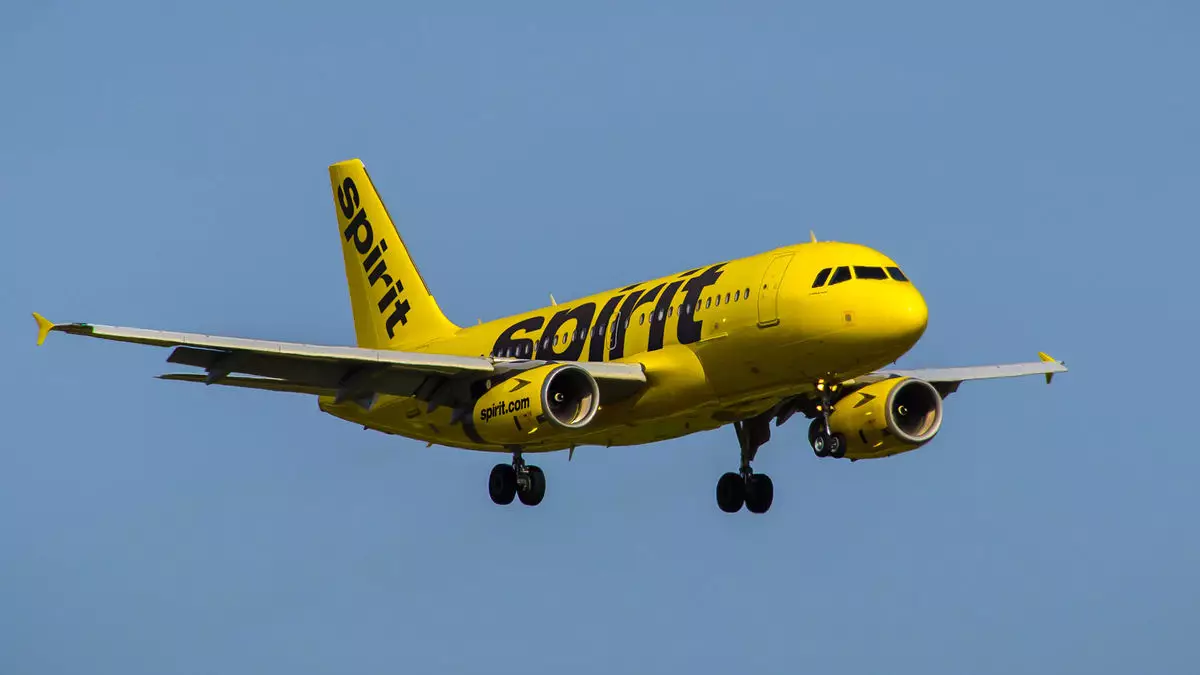Spirit Airlines is embarking on a critical path towards a possible restructuring agreement with its bondholders, a process likely to culminate in a bankruptcy filing. The situation reveals a company grappling with financial instability, a scenario not uncommon in the volatile aviation industry, especially as airlines contend with rising operational costs and fluctuating demand. Despite the impending restructuring, Spirit is reassuring passengers that all bookings and flights will continue as scheduled, potentially seeking to maintain customer confidence amid turbulent waters.
In a recent regulatory disclosure to the Securities and Exchange Commission, Spirit indicated active negotiations with a majority of its bondholders regarding maturing debt obligations. The stakes are particularly high with $1.1 billion linked to its loyalty program, due next year. This impending financial upheaval illustrates how deeply intertwined company operations are with financial backing and the urgent need for effective management of debts and obligations.
While the restructuring is anticipated to obliterate existing shareholder value, Spirit has reassured stakeholders that employees, unsecured creditors, customers, suppliers, and lessors will remain insulated from the fallout of these financial maneuvers. Such a focused approach is critical for sustaining operational integrity; however, the obliteration of shareholder equity raises serious questions about future investments and stakeholder trust in the airline’s capacity for recovery.
The stock market responded swiftly to these developments, with Spirit’s shares plummeting over 50% in a single day. This immediate market reaction is a stark reminder of how investor sentiment can shift rapidly based on perceived risks, reinforcing the importance of transparent communication from leadership during this uncertain period.
Just a month prior, reports suggested renewed merger discussions between Frontier Airlines and Spirit. However, recent announcements underscore a shift, with Frontier opting out of acquisition talks. This pivot highlights the precariousness of the airline’s position in the market and complicates its already strained situation. Frontier’s withdrawal as a partner suggests a lack of confidence in Spirit’s financial future, further complicating the airline’s strategies for recovery and growth.
Spirit’s historical context adds another layer of complexity. A previous agreement for acquisition by Frontier fell through when it was outbid by JetBlue, only for that merger to be thwarted by antitrust regulators. Amidst these setbacks, it is imperative that Spirit bolsters its operational management and investor relations to facilitate any future sustainability in the market.
The airline has taken several measures in an attempt to stabilize its financial footing, evidenced by a recent sale of 23 Airbus aircraft for over $500 million. Additionally, Spirit has sought to decrease operational costs by reducing flight capacity by 20% in the fourth quarter. The introduction of new fare bundles focuses on attracting higher-spending customers, indicating a strategic pivot toward improved revenue generation.
Spirit’s expectation to finish 2024 with approximately $1 billion in liquidity, down from $1.3 billion at the close of 2023, underscores a cautious optimism—though tempered by the realities of past losses, including an operational loss of $360 million in the first half of 2023. Delays in their financial reporting further reflect the challenges top management faces, emphasizing the need for clarity in both operations and overall strategy.
Spirit Airlines stands at a crossroads, needing to carefully navigate through turbulent economic waters while addressing stakeholder concerns and operational integrity. The coming months will prove critical as they seek a restructuring agreement and attempt to regain their footing in a highly competitive airline industry.


Leave a Reply